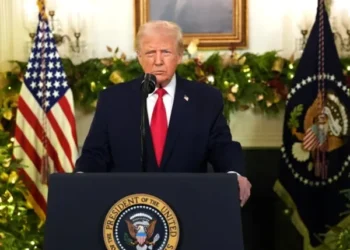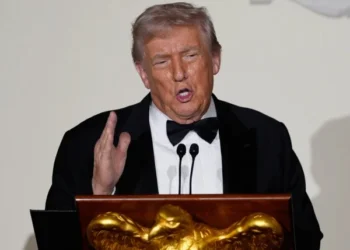Lahore – In a dramatic escalation of regional tensions, China has imposed a ban on the transfer of its advanced technologies to Indian companies, effectively opening a new chapter in the growing tech war between the two Asian giants. The decision comes amid long-standing geopolitical rivalries and increasing global competition for technological supremacy.
The development is particularly impactful as it coincides with the United States’ strategic push to shift its industrial and technological supply chains from China to India, a move that Beijing has viewed with growing suspicion. With China cutting off rare earth metal supplies and recalling Chinese tech experts from Indian facilities, including Apple’s iPhone supplier Foxconn, this ban marks a turning point in South Asia’s economic and technological landscape.
🧭 Background: The U.S. Pivot Toward India
For more than two decades, the United States has adopted a policy of economic diversification in Asia, aiming to decrease its dependency on Chinese manufacturing. As part of this realignment, India emerged as a preferred partner, thanks to its large labor force, democratic political structure, and strategic location in the Indo-Pacific region.
Several U.S. multinationals, including Apple, Google, and Amazon, have been encouraged—both politically and economically—to move operations or build supply chains in India. Major investments have followed, and India has ramped up efforts to become a global technology and manufacturing hub, branding initiatives like “Make in India” as a national priority.
However, China’s recent retaliatory actions have shown that this transition will not be smooth.
⚙️ China’s Clampdown: Technology Transfer Ban and Rare Earth Export Reduction
China’s response to U.S. and Indian cooperation has been swift and strategic. In the first phase, it has taken two key steps:
🔹 1. Restricting Rare Earth Metal Exports to India
Rare earth elements (REEs) are essential raw materials in the production of a wide range of advanced technologies, including:
- Smartphones and computers
- Electric vehicles and batteries
- Wind turbines and solar panels
- Semiconductors and defense equipment
With China controlling nearly 70% of global rare earth supply, any disruption poses serious threats to global supply chains. By cutting down shipments to India, Beijing has targeted a vital component of India’s emerging electronics and semiconductor sectors.
🔹 2. Recall of Chinese Tech Experts from Foxconn Facilities in India
In a further blow, China has withdrawn all its scientists and technical experts working in Indian units of Foxconn, the Taiwanese multinational electronics manufacturer. Foxconn operates several plants in India that assemble iPhones and other Apple devices.
These Chinese engineers played a pivotal role in managing advanced manufacturing processes and quality control. Their absence is expected to cause production delays and possible technical disruptions, affecting Apple’s plans to diversify production out of China and into India.
🚫 Ban on Technology Transfers to Indian Firms
China has also officially prohibited its companies from transferring proprietary technologies to Indian firms. This includes software, machinery blueprints, AI tools, and electronics system designs that were previously being licensed to Indian companies in sectors such as:
- Telecommunications
- Consumer electronics
- Renewable energy
- Battery storage technologies
This restriction has already started affecting joint ventures and technology partnerships, many of which were part of India’s strategy to localize high-tech production and reduce foreign dependence.
🇮🇳 The Modi Government’s Ambitions Under Threat
The Indian government, under Prime Minister Narendra Modi, has spent years positioning the country as the next global technology and manufacturing superpower. Through initiatives like:
- Make in India
- Digital India
- Startup India
- Semicon India Programme
New Delhi has sought to attract global tech investments, create jobs, and compete with China in both low-end manufacturing and high-end technological innovation.
However, the sudden and aggressive Chinese move to disconnect from India’s supply chain has thrown a wrench into these ambitions. Experts say India may now need to seek alternative sources for rare earths and rebuild technical expertise domestically or with new partners like Japan, South Korea, or the European Union.
🌏 Regional and Global Implications
🔍 The Start of an Asian Tech War?
Analysts have described the move as the start of a new “Tech Cold War” between China and India, mirroring the larger U.S.-China tech rivalry. While border tensions and geopolitical skirmishes have been ongoing, this tech-focused front may have longer-term economic ramifications.
📉 Supply Chain Disruptions
With Foxconn’s Indian operations likely to suffer setbacks, companies like Apple and Qualcomm may find their supply chains disrupted, especially for devices intended for the South Asian market. This may lead to production delays, price increases, or a shift in manufacturing locations.
💼 Impact on Indian Startups and SMEs
India’s startups and small-to-medium enterprises (SMEs) in the tech sector often rely on affordable Chinese hardware and technology licenses. The sudden disruption may increase operational costs and force companies to delay product launches or pivot their business models.
🔁 Can India Recover? Possible Strategic Responses
Despite the setback, India is not without options. Policy analysts believe that New Delhi could respond with:
✅ 1. Strengthening Domestic R&D
India may accelerate investment in research and development, encouraging domestic companies and public institutions like IITs, DRDO, and ISRO to fill the innovation gap left by the absence of Chinese technology.
✅ 2. Forming New Strategic Alliances
India could deepen technology and trade partnerships with countries such as:
- Japan, which has rare earth reserves and is seeking stronger Indo-Pacific ties
- Australia, another country rich in critical minerals
- South Korea and Taiwan, leaders in semiconductor manufacturing
- European Union, particularly Germany and France, for industrial tech
✅ 3. Diversifying Supply Chains
India may also turn to countries like Vietnam, Indonesia, and the Philippines to source components and technical support. Multinationals may be incentivized to establish new facilities in alternative “China-plus-one” locations to hedge against regional disruptions.
🤝 U.S. Caught in the Crossfire?
The United States, though not directly involved in the China-India spat, may face collateral effects. Apple’s reliance on both Chinese and Indian operations for manufacturing places it in a vulnerable position. Washington may need to reassess its reshoring and friend-shoring strategies, offering increased incentives to India and other partners to maintain momentum against China’s dominance.
📢 Expert Opinions
“This is Beijing sending a very clear message: if you’re going to try to replace us, you’ll pay a price,” says Dr. Arvind Subramanian, former Chief Economic Adviser to the Government of India.
“India has the talent and ambition, but replacing Chinese hardware and tech expertise overnight is not easy,” notes Dr. Tanvi Madan, Director of India Studies at Brookings Institution.
🧭 Conclusion: A Tech War With Far-Reaching Consequences
The China-India technology standoff represents far more than a bilateral economic dispute. It highlights the fragility of global supply chains, the geopolitical stakes in technological advancement, and the growing divide between nations vying for digital and manufacturing dominance.
As China cuts off rare earth metals and tech knowledge from flowing into India, New Delhi now faces a crucial test: Can India rise to the challenge and build self-reliance in critical technology sectors, or will it remain entangled in the intricate web of global dependencies?
Only time will tell, but one thing is clear — the global technology landscape is undergoing a seismic shift, and South Asia is at the heart of it.

























